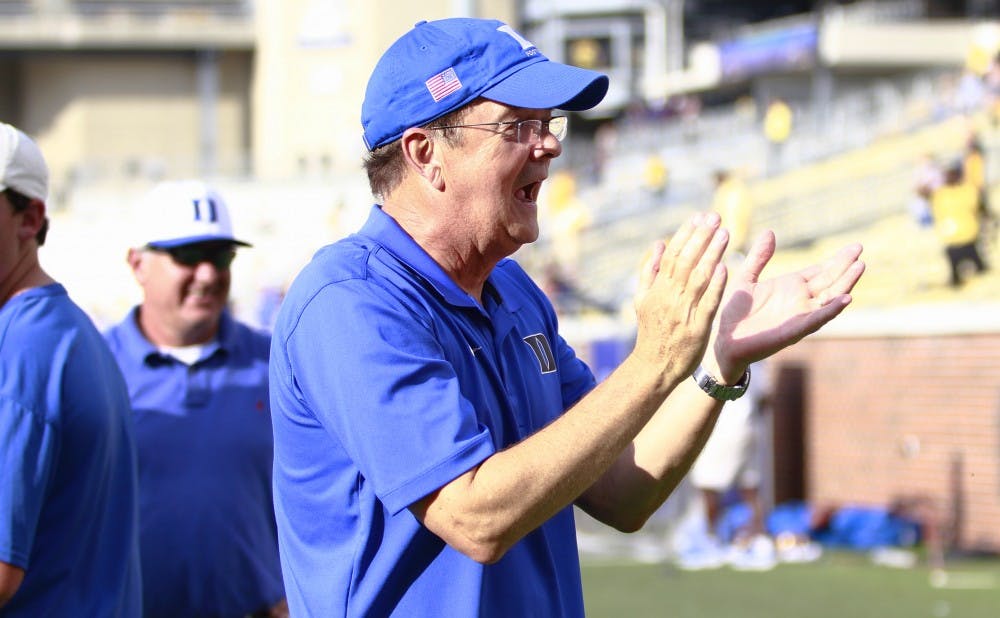Among NFL quarterbacks, there may be no better mind than the Denver Broncos’ Peyton Manning. Now in his 16th season under center, Manning has turned signal-calling into a masterpiece, a blend consisting of equal parts art and science. Give him any extra time to study your defensive schemes, and he’ll more than likely torch you all afternoon.
Manning’s career winning percentage is 69.8, fourth all-time among NFL quarterbacks. Given his attention to detail and innate ability to read defenses and make adjustments, it seemed likely that he and his team would be even more dangerous coming off of bye weeks—rest and recovery periods built into the NFL schedule to allow for a break from the monotony of the 16-game season. But although Manning’s teams are an impressive 12-4—winning 75 percent of the time—with an extra week to prepare between games, that’s not much different from his career winning percentage.
I bring up Manning because—as has been noted time and again—he honed his quarterbacking skills in college working with current Duke head coach David Cutcliffe when Cutcliffe was the offensive coordinator at Tennessee. One of the game’s foremost offensive minds in his own right, Cutcliffe has guided the Blue Devils to a 7-1 start this season, their best since 1994. After sneaking out of Heinz Field with a 51-48 double-overtime win against Pittsburgh last weekend, Duke improved to 2-0 this season after a bye week. I wanted to see how Cutcliffe’s record following byes compared with his overall record in his six-plus seasons in Durham.

Through Saturday’s game, Duke has compiled a 38-45 ledger with Cutcliffe at the helm, with a 6-4 record in games played the week after its open dates—a 14.2 percent improvement in its winning percentage. During the last two seasons, the squad is 17-3 in regular-season games and has won all four of its contests with an extra week’s rest and preparation.
When Cutcliffe inherited a woeful program in 2008, the Blue Devils were far from competing week in, week out. Now that Duke will be going bowling for the third consecutive season, his team is a threat in every game it plays, and especially dangerous when given extra time to prepare. The Blue Devils even average slightly more points per game (2.7) with two weeks between games, impressive considering Duke’s recent trend of front-loading the schedule before its first bye with non-Power Five nonconference opponents against whom it usually lights up the scoreboard.
But how does that 6-4 mark stack up compared to the rest of Duke’s peers in the ACC?
To answer that question, I tallied up the post-open-date records of all of the ACC’s current members since Cutcliffe began pacing the Blue Devil sideline in 2008. Duke’s winning percentage ranked tied for fifth during this time period* and—as you might imagine—the usual suspects topped the list. The conference’s three strongest historical programs—Florida State, Miami and Clemson—posted the best marks, with the Hurricanes taking the top spot with an unblemished 8-0 mark in post-bye action since 2008.
The one surprise team ahead of the Blue Devils: Syracuse. The Orange have had three different head coaches since 2008, but have gone 7-3 after open dates. Neither team will be coming off a bye when the two programs meet Saturday at the Carrier Dome.
Cutcliffe, Georgia Tech head coach Paul Johnson and Virginia Tech head coach Frank Beamer are the only three coaches to remain at their school throughout this stretch, so the next step was to compare among individual coaches, not just programs. Among the 30 total coaches to lead ACC programs in this six-plus year stretch, Cutcliffe’s record after bye weeks ranked tied for 12th.

Despite recording the fourth-lowest overall winning percentage in the conference since 2008 at 45.8 percent, Duke’s performance following bye weeks is the fifth-best in the ACC, a reversal that can be partially attributed to the first few years of the Cutcliffe era—where wins of any type were hard to come by—and the extra studying and preparation put in by the players and Cutcliffe’s coaching staff during off weeks. And of course, not all post-bye games are created equal—the Blue Devils hosted Navy last year and Florida State in 2011. But 15.8 percent of the Blue Devils’ wins since 2008 have come after a week off—only Virginia and Syracuse have accounted for a higher percentage of their wins with victories after byes.
Blue Devil fans can only hope that Cutcliffe and his team are able to continue their recent success on the gridiron—bye week or not—so that the program’s success after bye weeks will more closely mirror its larger body of work. Just like Manning.
*Note: Unlike the majority of schools in the conference, Duke has not played a non-Saturday game in Cutcliffe’s time in Durham. Teams that play these irregular contests face a short turnaround from the previous week, but then get a lengthy break after a midweek game. They don’t play that Saturday, but these technically aren’t open dates, so I didn’t count any of the results following these breaks—usually nine days—when tabulating my totals. Fans will get to see Cutcliffe’s squad operate on short rest Nov. 20 against North Carolina after hosting Virginia Tech Nov. 15. The Blue Devils then won’t play again until Nov. 29 against Wake Forest in the regular-season finale.
Get The Chronicle straight to your inbox
Sign up for our weekly newsletter. Cancel at any time.

